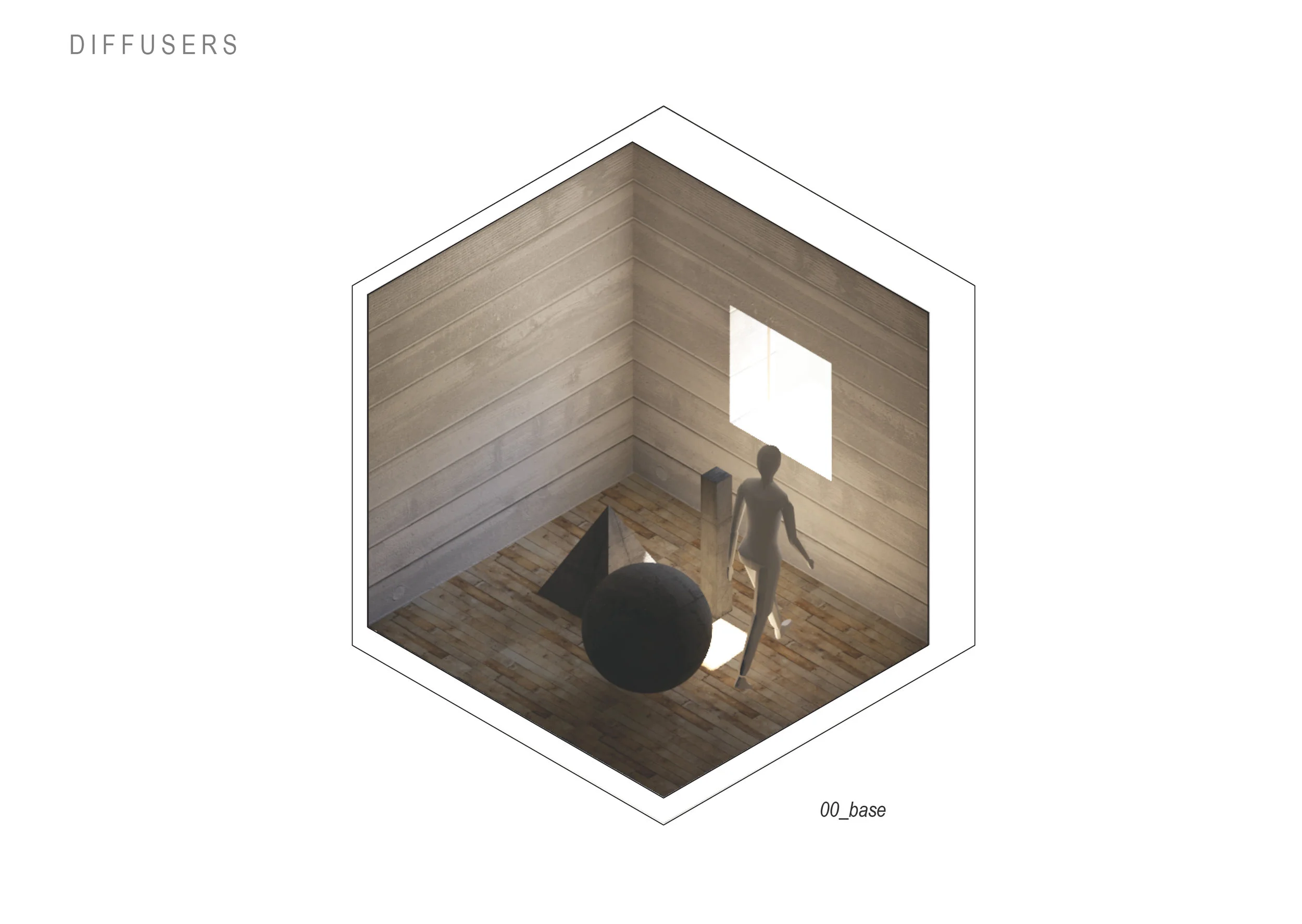Diffusers are primarily used in architectural work to reduce the directionality or intensity of incident light. When light-sensitive materials are present in a space, a diffusing mechanism can be used to provide ambient illumination and indirect access to daylight while significantly reducing the possible degradation of the artifacts. These optic devices can also be used to preserve privacy or improve the distribution of light within a space. The parameters that inform the nature of the diffuser can include its size, proportion, translucency, reflectivity, geometry, and the possible introduction of a covering panel. Where a covering panel is not used to obscure the source, thickening the frame of the opening produces surfaces of a more significant surface area around the source that can act to diffuse the incident light.
Because this mechanism relies on diffuse reflection, it will most often produce the archetypical effect of a secondary source, wherein light that directly enters the space is reflected onto another surface which then also acts as a source of light within the room. Diffusers can also exist at a much smaller scale within an architectural space. Mists and clouds are diffusers because the size of the water droplets is similar to the size of the wavelengths of incident light that interact with them. Mie scattering, a process that equally scatters all wavelengths of light in all directions including the forward direction occurs, and the scattered white light appears diffuse while each droplet appears as a miniscule secondary source of light.











Sample Series of parameters applied in sequence to the base optic device
